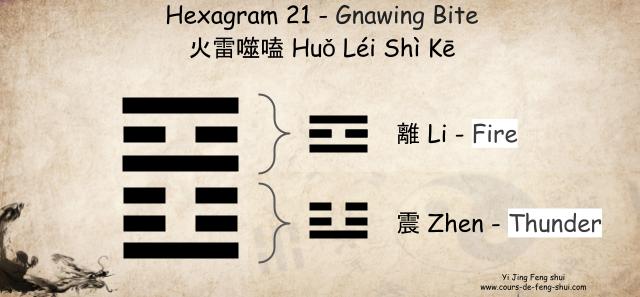
Hexagram 21 of the Yi Jing, known as Gnawing Bite or 火雷噬嗑 (Huǒ Léi Shì Kè) in Chinese, is composed of the upper trigram ☲離 (Li – Fire, the younger daughter) and the lower trigram ☳震 (Zhen – Thunder, the eldest son). This hexagram symbolizes active intervention and the use of vigorous measures to restore harmony and resolve conflicts. It represents a moment where decisive action is necessary to address obstacles or challenges.
Jia Zi Combination:
Hexagram 21 is associated with Yi Chou (乙丑), the 2nd combination of the sexagesimal cycle:
- 乙 (Yi) represents Yin Wood, the celestial stem.
- 丑 (Chou) represents the Ox, the terrestrial branch.
Interpretation of the Hexagram’s Structure:
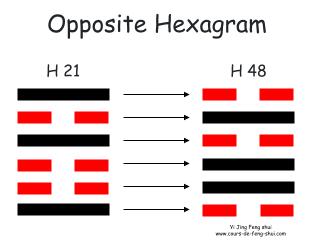
Opposite Hexagram:
- The opposite hexagram of 21 is Hexagram 48 – Jing (井), meaning “The Well.” This is derived by replacing the Yang lines with Yin lines and vice versa.
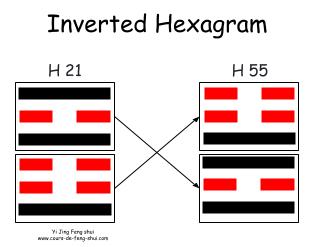
Inverted Hexagram:
- The inverted hexagram, which provides information on the origin of the situation, is Hexagram 55 – Feng (豐), meaning “Abundance.” This is obtained by swapping the positions of the two trigrams.
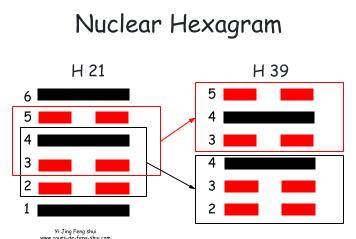
Nuclear Hexagram:
- The nuclear hexagram, representing the core of the issue, is Hexagram 39 – Jian (蹇), meaning “The Obstacle.” This is formed by using the four central lines of the hexagram to create two new trigrams.
Mutant Hexagram (Derived):
When a line in Hexagram 21 mutates, it gives rise to a new hexagram, indicating how the situation may evolve:
- Line 6 mutates to form Hexagram 51
- Line 5 mutates to form Hexagram 25
- Line 4 mutates to form Hexagram 27
- Line 3 mutates to form Hexagram 30
- Line 2 mutates to form Hexagram 38
- Line 1 mutates to form Hexagram 35
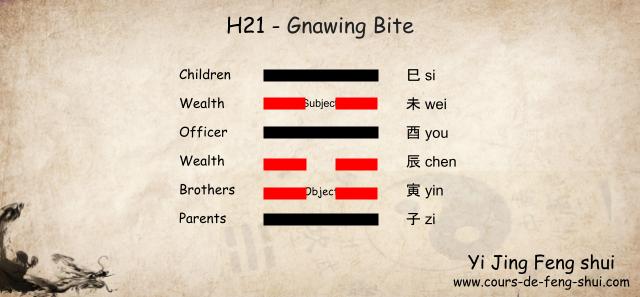
Taoist Yi Jing Wen Wang Gua Interpretation:
In the Taoist interpretation following the Wen Wang Gua (Liu Yao) method, Hexagram 21 is associated with the Xun (Wood) family and represents generation 5:
- Subject is placed on the fifth line.
- Object is placed on the second line.
Six Relatives: Each line of the hexagram corresponds to one of the six relatives, reflecting different aspects of the querent’s life:
- 6th line: 巳 (si) Fire – Children
- 5th line: 未 (wei) Earth – Wealth
- 4th line: 酉 (you) Metal – Officer
- 3rd line: 辰 (chen) Earth – Wealth
- 2nd line: 寅 (yin) Wood – Brothers
- 1st line: 子 (zi) Water – Parents